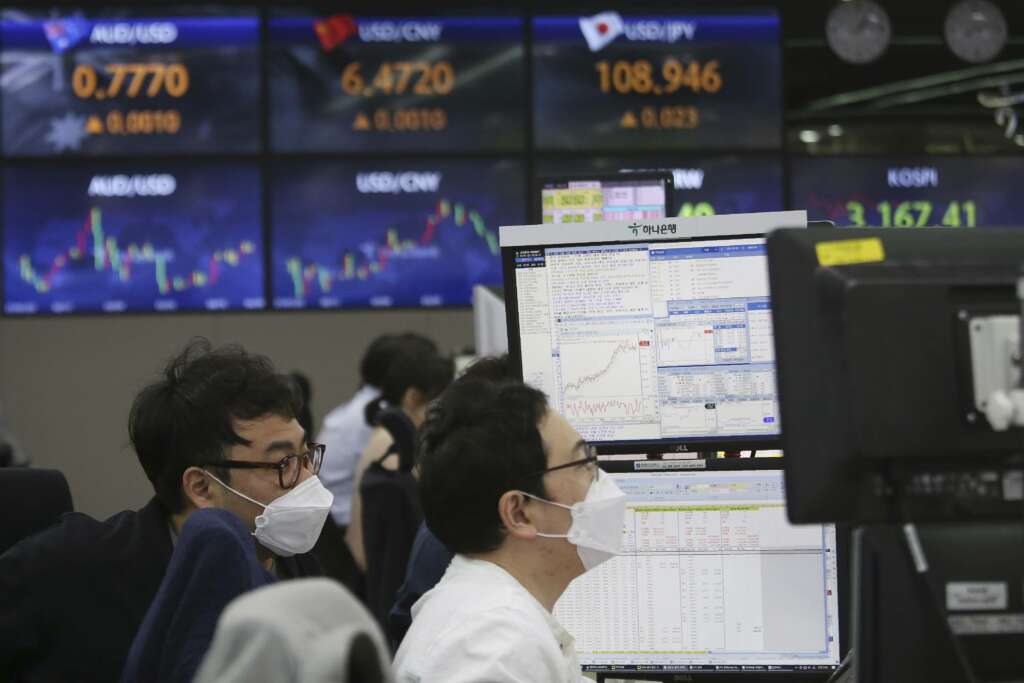
Stocks gave back some of their recent gains Friday, though the market still closed out April with its biggest monthly gain so far this year.
The S&P 500 fell 0.7% as investors backed away from technology, financial and communication stocks. Despite the decline, the benchmark index ended April with a 5.2% gain, its best month since November 2020, when President Joe Biden was elected.
Under Biden, the Dow Jones Industrial Average notched its best first 100 days under a new president since Franklin Delano Roosevelt took office in 1933, according to LPL Financial, with a 9.9% return as of April 29. The Dow delivered a 6.1% return during former President Donald Trump’s first 100 days in office.
The gains have come as large-scale coronavirus vaccination programs help people return to jobs and normal behaviors after more than a year of restrictions.
“It’s been a very solid month for global equities across the board,” said Megan Horneman, director of portfolio strategy at Verdence Capital Advisors. “Periods of pullbacks are definitely expected when you have valuations run so much.”
The S&P 500, which hit an all-time high a day earlier, fell 30.30 points to 4,181.17. The index eked out a gain of less than 0.1% for the week. The Dow fell 185.51 points, or 0.5%, to 33,874.85 and the Nasdaq lost 119.86 points, or 0.9%, to 13,962.68.
The Russell 2000 index of smaller companies fared worse than the broader market. It fell 29.01 points, or 1.3%, to 2,266.45.
The rollout of COVID-19 vaccinations, massive support from the U.S. government and the Federal Reserve, and increasingly positive economic data have been driving expectations for a strong rebound for the economy and robust corporate profit growth this year. That’s helped stocks push higher and kept indexes near their all-time highs.
The Commerce Department delivered more encouraging news Thursday when it said the U.S. economy grew at a brisk 6.4% annual rate in the last quarter and is likely to accelerate further as more vaccinations are administered and COVID-19 cases continue to fall.
“The broad story is one of case counts on the whole being lowered across the majority of the world and vaccines ramping up generally across the world and that’s getting us back to normal,” said Jason Pride, chief investment officer of private wealth at Glenmede.
There’s also the trillions of dollars in government support that has gone out to help the U.S. economy recover from the pandemic. The Commerce Department said U.S. household incomes surged 21% last month, driven largely by the $1,400 payments that went out to most Americans as part of President Biden’s economic package. Consumer spending rose at the fastest pace in nine months.
The Biden administration is also pushing for more infrastructure spending to help further boost the economy. The big policy and spending proposals have investors looking further up the road to what a “new normal” looks like after the pandemic, Pride said.
The market still has some key concerns, including how government spending will impact taxes and inflation. To pay for his plans, Biden has proposed to nearly double the tax rate that Americans who make more than $1 million in a year pay on profits from stocks and other investments. The president also wants to impose a 21% minimum tax on corporations’ foreign earnings in a bid to stop companies from stashing profits in countries with low tax rates.
Treasury yields have stabilized after jumping earlier this year as concerns about inflation rose. The yield on the 10-year Treasury slipped to 1.62% from 1.64% late Thursday, and was down from 1.68% at the start of the month. Analysts still expect yields to rise again.
“The longer term trend in yields has turned higher,” said Willie Delwiche, investment strategist at All Star Charts. “We need to see German and Japanese yields move higher as well if U.S. Treasury yields are going to resume their ascent.”
Investors have also gotten strong corporate earnings which have helped justify higher stock prices. Amazon initially rose after the e-commerce giant reported that its profits more than tripled in the latest quarter. It ended 0.1% lower Friday. Earnings from other Big Tech companies have also blown away expectations. Apple and Google parent company Alphabet each reported this week that their profits more than doubled in the first quarter. Facebook came close; its earnings nearly doubled.
More than half of the companies in the S&P 500 have reported their results, which show earnings growth of 54% percent so far for index, according to FactSet.
Investors will get another big dose of earnings reports to start off May, including results from drugmakers Eli Lilly, Merck as well as Pepsi, Colgate-Palmolive, the railroad CSX and drugstore giant CVS. Investors will also get April’s jobs report next week.
The S&P 500 notched a gain of about 28% between November and April. Now the market enters the six-month stretch of May through October that has historically included among the weakest months of the year for stocks, hence the Wall Street adage “sell in May and go away.” Still, stocks have posted gains during the May-October period eight of the past 10 years, according to LPL Financial.
Most markets outside the U.S. also rose in April, though the gains were more modest than those for the S&P 500 and Nasdaq. One exception was India, where the market fell 1.5% amid an explosion in coronavirus cases that has catapulted the death to more than 200,000.
Copyright © 2021 . All rights reserved. This website is not intended for users located within the European Economic Area.
